How To Grow Cilantro
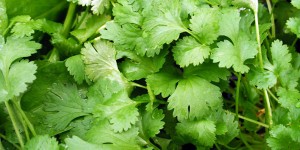 If you are looking for a guide on how to grow cilantro, you have found the perfect resource.
If you are looking for a guide on how to grow cilantro, you have found the perfect resource.
Cilantro has a unique look to it and is identifiable primarily by its leaves, but it can be confused with parsley. Cilantro’s leaves are bright green in color and appear to be flat like parsley leaves, except that cilantro leaves are smaller in size. The stem of Cilantro is long and also thin.
The herb smells similar to an onion and has a very fresh smell to it. Its taste resembles a citrus flavor similar to a lemon. The seeds from the cilantro plant can be used to form the spice known as coriander. Many people like to keep the seeds in their cabinet and grind them down when they are ready to use them.
Cilantro is typically used in many different food dishes including Mexican and also Indian cuisine. You have probably run into cilantro at some point in time as it is used in fresh salsa and also sometimes in guacamole.
Outside of being used in recipes, cilantro is used as a garnish on plates. It is not uncommon to find a couple pieces of it decorating your plate at a restaurant. In ancient times, cilantro was used for its medicinal purposes and relied upon to help aid in healing.
Cilantro offers many health benefits to its eaters and is actually good for you so you can benefit from learning how to grow cilantro. Here are a few different ways you can benefit: it works as an anti-inflammatory, it can help to lower your bad cholesterol and to reduce mood swings caused by hormones. Cilantro can also help to relieve gas and nausea.
As you can see, cilantro offers many different benefits to those who eat it on a regular basis. Besides offering these benefits to you, it is also used medicinally and works as an anti-septic and fungicidal.
1. Prerequisites to Grow Cilantro
1a. Best Conditions and Weather
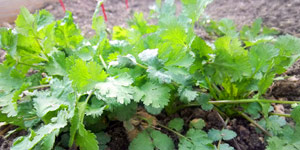 Learning how to grow cilantro is the first step in having your own beautiful garden of this fresh smelling and wonderfully tasting herb. Imagine your own garden full of cilantro and whenever you are ready for it, you can go get some. Anyone can ideally grow cilantro and if you want to learn how to grow cilantro you can grow it too. Even though anyone can grow cilantro you must take the time to learn about it and know what to do otherwise you may end up losing your crops as they do grow fairly fast.
Learning how to grow cilantro is the first step in having your own beautiful garden of this fresh smelling and wonderfully tasting herb. Imagine your own garden full of cilantro and whenever you are ready for it, you can go get some. Anyone can ideally grow cilantro and if you want to learn how to grow cilantro you can grow it too. Even though anyone can grow cilantro you must take the time to learn about it and know what to do otherwise you may end up losing your crops as they do grow fairly fast.
Cilantro does the best in cool weather. It will grow very fast given it has the right type of cool weather and thrives best in spring and also fall when the sun is not too hot and the winter is not too cold. If the weather does become too warm for the cilantro the plant will flower and the leafy herb. The seeds that are produced when the plant flowers are referred to as coriander which is a spice used in the kitchen.
Cilantro is an herb that can withstand some cool weather and frost but nothing heavy. It is recommended to plant cilantro once the last 32 degree Fahrenheit weather has passed in the spring. If given the right mild climate, cilantro will do amazing and produce a lot of fresh herb for you. The perfect temperature for thriving cilantro is about 70 degrees Fahrenheit. When you are first learning how to grow cilantro, know your seasons and temperatures. Cilantro can be harvested throughout the whole season. Remember that if the temperature rises to 75 degrees or above for a few days, your herbs will go into the flowering process.
Where you live will make a difference on when you should and should not plant your cilantro. Again, cilantro will do well in temperate climates during spring and winter. In tropical climates, you will find that cilantro will do better in dry, cooler times throughout the year. Cilantro needs to receive full sun throughout the day so you need to pick a spot that will receive a lot of direct sunlight for about 6 hours every day.
1b. The Right Tools
There are many different basic tools that you will need to make sure you can start your own cilantro garden. You may have some of these tools lying around your house. Consider these gardening tools when learning how to grow cilantro and starting your new garden: a shovel, containers (if needed), pots, trowel and a rake.
1c. Suitable Containers, Soil, and Seeds vs. Plants
Cilantro can be grown in soil and will thrive both in the ground in soil or in a pot with soil. Choosing which one you want to use is completely up to you and either will do. A pot or container will work well if you decide you want to start growing your cilantro indoors at first. Even if you start growing your cilantro indoors, you will need to move it outside at some point in time. If you choose to plant your cilantro in a pot, you will need to find a very deep pot as cilantro tends to root very deeply. The smallest pot for cilantro should be about 12 inches deep.
When learning how to grow cilantro, you will learn that you can either start with cilantro seeds or you can start out with cilantro plants. There is a big difference between both cilantro seeds and cilantro plants. However a beginner learning how to grow cilantro for the first time may prefer plants.
Cilantro seeds are the best to use because they do sprout fast and they do really well in soil. Since the seeds can be planted directly into the soil, they do not need to start off indoors before going outside.
Cilantro plants are great for beginners who are just learning how to grow cilantro and also great for people who do not want to wait for harvesting season. Cilantro plants can be started indoors before the end of the frost season and then can be transferred to an outside garden once cilantro season arrives. The plants will do well in the home as long as they are taken care of.
To be able to determine which one is right for you, you will need to decide whether you are comfortable trying the plants inside and whether or not you can take care of them. Beginners seem to do well with the plants by learning how to grow cilantro indoors in the beginning. Once you feel comfortable, seeds are the best option and waiting for the season to come is worth it.
2. Planting and Growing Cilantro
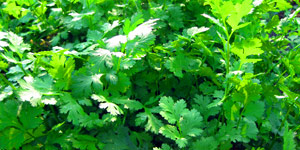 When you first take an interest in how to grow cilantro, the information may seem overwhelming. As you study and learn about cilantro, you will soon find yourself becoming an expert and learning everything you need to know to have a successful garden full of this herb. Planting and growing cilantro will be a fun experience and will be very rewarding if you follow through. Once you know how to harvest cilantro you will be able to start making fresh food and enjoy the benefits cilantro brings with it.
When you first take an interest in how to grow cilantro, the information may seem overwhelming. As you study and learn about cilantro, you will soon find yourself becoming an expert and learning everything you need to know to have a successful garden full of this herb. Planting and growing cilantro will be a fun experience and will be very rewarding if you follow through. Once you know how to harvest cilantro you will be able to start making fresh food and enjoy the benefits cilantro brings with it.
2a. Soil
When you are choosing soil for cilantro plants, choose a soil that is light and also airy. The soil should be fast draining as you do not want water gathering or sitting on the roots for too long. Make sure that the soil has a component such as sand mixed in with it to help with the draining process. Since cilantro is not very picky about its soil, you can choose any type of soil to use. As long as the soil is kept the way it needs to be, the cilantro will grow without any problems.
One thing you can do is use fertilizer with your soil to help your cilantro grow even better. You can use a liquid type of fertilizer or if you prefer, use pellets. If you choose to use pellets, make sure these pellets are control release pellets.
Once you have chosen which type of soil you are going to use, lay down the soil and make sure it is in an area that receives full sun. Keep the soil well drained from water and make sure the pH is anywhere between 6.2 and 6.8.
If you are first learning how to grow cilantro, you may be wondering how to know the level of pH in your soil. You can purchase a test kit at a hardware store or you can easily test it yourself at home as well. To test the pH you will need to grab a scoop of soil and place it into a container. Once in the container, add a half cup of vinegar to the container. If the soil begins to fizz or bubble, this means the soil is considered alkaline. Alkaline is when soil is over 7 pH. If you do not receive a reaction from the vinegar, grab another fresh scoop of soil and place it in a new, fresh container. Pour in a half cup of water and mix together. Once mixed, add a half cup of baking soda. If the soil begins to fizz or bubble then the soil is considered acidic. Acidic soil is anything considered less than 7 pH. Even though you want your soil to be somewhat acidic, if the acidic level is too low, your cilantro will not do well. To get an exact measurement of the pH in the soil, you will need to buy a testing kit to get the exact number. If you find that you need to make adjustments to your soil, you can. Simple steps, such as adding lime and pine needles help.
2b. How to Plant Cilantro
Once you are ready to plant your cilantro and it is the perfect season, you will want to grab your cilantro seeds and supplies and head out to the garden. Choose a section in your garden that is exposed to the sunlight every day. Once you have found this spot, make sure your soil is completely ready for planting. You can check for soil readiness as described above.
Once your soil is ready for use, mix the sand with the seeds before planting. This will help them spread out evenly throughout the soil. You will need to mix 3 parts of sand to 1 part seed. After you have done this, plant the seeds about 1/4 inch deep into the soil and make sure to space each seed about 6 to 8 inches apart from each other. The seeds can then be sowed in rows that are spaced about a foot apart from each other. Continue to plant the seeds that you have until you either run out of room or seeds. Once the cilantro seeds are planted they will germinate in about 7 to 10 days but they need a lot of water to do this. Sometimes germination can take a bit longer, up to 21 days, so do not be surprised. It is important that your cilantro plants receive about an inch of water throughout the week until they do begin to germinate.
To harvest all season long, keep some seeds and space available to continue planting new seeds once the first set of seeds start to sprout. This is important because you will be able to continue harvesting and never run out of fresh cilantro.
Once the plants start to germinate and pop up out of the ground you will need to take care of them. Thinning the plants is a way to get them to grow better and also live longer. You can easily thin them out by using a pair of garden shears. Once the plants have reached about 2 inches in height you can begin the fertilization process. It is important not to over fertilize your plants. It is important to keep the plants moist throughout the growing process and make sure the soil stays moist but not wet. You do not want the soil to become over saturated as this can cause problems with your plants.
Remember to continue thinning the cilantro plants throughout the growing process to avoid the plants becoming overcrowded. If you find that your plants are too overcrowded you can pull out the weaker plants and allow the stronger plants to continue growing in the garden. Making sure to prune your cilantro plants will help keep them from sprouting seeds.
2c. Harvesting Cilantro
Harvesting cilantro plants will be an exciting time during your journey of learning how to grow cilantro. Harvesting time means that your plants are ready for you to grab what is ready to be used and then use the herbs in your home for cooking or garnish.
You can harvest your cilantro fairly easily and you should not run into any problems. You will know when to harvest your cilantro plants as they will reach about 8 inches in height or more. The leaves should be about 4 inches in length.
Harvest the cilantro by cutting off the outer leaves and leaving the inner leaves there. Try to avoid cutting more than 1/3 of your leaves at once. If you cut too many leaves, the plant will become weak and possibly die. If you want the best tasting cilantro, harvest your plants in the early morning.
Once you have harvested all of the fresh cilantro, make sure to go back through and look for any dead or brown leaves. If you find any old or dead leaves, you will want to remove them from the plant to allow for the other leaves to continue growing. Once the leaves have been completely harvested from the cilantro plant, you will have about two or three more cycles of harvest time from each plant.
After the harvest time for your cilantro is through, you will need to decide if you would like to allow the plants to continue to sit until they flower and seed. A beginner may seem to struggle with seeds at first when learning how to grow cilantro. If cilantro is not kept properly in the right weather it will start the seeding process and give beginners a lot of trouble. The seeds produced from the cilantro plant are called coriander seeds.
All cilantro plants will break off into the flowering and seeding cycle. If you are looking to harvest your coriander seeds, you will need to maintain the plant and allow it to flower and then seed. You need to make sure you watch the flowers for seeds as the seeds can literally appear overnight.
Once the seeds are formed, pick the flowers from the plants and place into a bag. You can then shake the bag to remove the seeds and allow them to dry. Once the seeds are dry, you can toast them and then grind them down into the spice coriander. This spice is used in many different recipes and can be used to enhance the flavor of many different dishes.
3. Maintenance: Weeds, Disease, and Pests
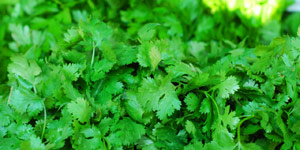 When you are first learning how to grow cilantro you will be overwhelmed at everything there is to know. Make sure that you educate yourself on what can happen to your plants as this is important for any gardener, beginner or professional. There are different insects and also diseases that can harm your plants and cause you a season of devastation if you are not properly prepared for them. There are different types of insects and diseases that you need to know about and also ways to prevent them. You wouldn’t want your whole season to be ruined due to these pesky little problems.
When you are first learning how to grow cilantro you will be overwhelmed at everything there is to know. Make sure that you educate yourself on what can happen to your plants as this is important for any gardener, beginner or professional. There are different insects and also diseases that can harm your plants and cause you a season of devastation if you are not properly prepared for them. There are different types of insects and diseases that you need to know about and also ways to prevent them. You wouldn’t want your whole season to be ruined due to these pesky little problems.
Don’t worry! Every gardener has trouble with their garden at some point or another in their gardening career. It is important to make sure you know how to grow cilantro properly and also maintain it the best you can.
3a. Insects
Insects can cause your cilantro garden a lot of problems and there are common ones you may find wandering around. There are several different insects that like to feed on cilantro and can make it hard for a beginner to grow cilantro.
3a1. Beet Armyworm
The first type of insect is the beet armyworm. The beet armyworm is a pesky little moth insect but it is the larvae that destroy your plants. This insect is a well-known destroyer of plants and agriculture. Many of these moths can be found wherever there are crops and growing plants. The larvae of this moth tend to feed on the foliage of plants and can completely ruin a garden and prevent the plants from growing. The larvae also like to eat the new buds on plants which prevent the flowers from opening and sprouting. If you suspect these little insects you can identify them by observing your plants. The larvae tend to leave a silky and silver looking film around your plants.
Controlling the beet armyworm is important to the survival of your garden. If you do not catch an infestation right away, you may be in trouble as the older larvae do not die off as easily with insecticides. To start ridding your garden of these caterpillar worms, you will need to catch them and drop them into a container of soapy water. This will kill them. Once dead, throw the bodies away. You can treat your garden with an insecticide such as Bacillus thuringiensis. This is a natural insecticide and is often effective at killing these pests. Neem oil may do the trick as well.
3a2. Cabbage Looper
The second type of insect that can commonly be found invading your cilantro is the cabbage looper. The cabbage looper is another type of moth and its larvae are very destructive. This caterpillar appears to be a pale green color with white stripes. This caterpillar is considered very harmful to crops and plants as it eats a lot of the leaves and diminishes your plant to almost nothing. Presence of these larvae is indicated by holes in your leaves.
Cabbage loopers can be removed by hand and dropped into soapy water as well. This will kill them and you can then dispose of the dead bodies. If the infestation is severe, you can use Bacillus thuringiensis to treat your garden. This treatment is natural and will not harm the plants.
3a3. Green Peach Aphid
Another insect that may completely destroy your plants is the green peach aphid. This insect is highly damaging to your cilantro plants and catching the problem early is important. The green peach aphid is an aphid that attacks a number of different crops and plants. The young aphids will attack and destroy the plants by eating them and causing damage to the young plant. Aphids are important to get rid of as they cause a lot of damage and also reproduce quite quickly causing problems.
Treatment for these pesky little bugs is essential for the survival of your plants. Check the plants for aphids and signs of any aphids. If you notice any signs, mix together 1.5 cups of water with 2 teaspoons of dish soap and also 1 cup of vegetable oil. Place it in a spray bottle and spray where you saw the aphids or signs of aphids.
3a4. Fungus Gnats
Fungus gnats may invade your cilantro plants and are quite popular. These gnats are very small in size and appear to be dark in color. The larvae of these fungus gnats feed on plant roots.
Treatment is possible of these gnats and the gnats are fairly harmless to healthy plants. If the plants are seedlings, the gnats can do a lot of damage and kill the plant. If you notice fungus gnats you may be overwatering your plants. To treat your garden, stop watering your plants as much and allow the soil to dry up some. If that does not work, you can place sterile sand around the soil near the plants. Neem oil also works great at ridding your plants of gnats.
Ridding your cilantro garden of insects is important to the health of your plants and also having a successful harvesting season.
3b. Diseases
Besides pests, diseases can harm your cilantro garden and pose a threat to them. When this happens, you can throw away all of your hard earned time in learning how to grow cilantro. Cilantro is susceptible to disease and it is important when you are learning how to grow cilantro that you also learn how to treat cilantro. Below are some of the different diseases and ways to cure them.
3b1. Bacterial Leaf Spot
Cilantro can become victim to a disease called bacterial leaf spot. Bacterial leaf spot is one of the most common types of plant disease around. The bacteria will leave spots on the leaves that appear to be wet or soaked in water. After this, the spots will turn brown and the leaf will gain an irregular shape. Once the leaves are affected they turn yellow and die off.
To treat bacterial leaf spot you will need to remove and get rid of the bacteria itself. It is possible to completely get rid of this disease and save your plants. Always make sure to give the plants full sunlight interaction. This is important to help prevent bacterial leaf spot from coming back. Start by placing all plants in the correct sunlight and separate the infected plants from healthy plants. Start to prune away the dead and diseased leaves from the infected plants. If most of the plant is infected, prune only 1/3 of the plant at first as pruning too much will cause the plant to die. Once you are done pruning the diseased plants, rinse off the shears in Clorox bleach to prevent spreading the disease.
3b2. Root Knot Nematodes
Another disease that will eat away at your cilantro plants is called root knot nematodes and also stubby root nematodes. Root knot nematodes are tiny and almost microscopic parasites. They resemble roundworms and feed on your cilantro roots. Root knot nematodes can cause a lot of damage to your plant as they eat the roots. You may notice the disease if your plants become stunted in growth, become yellow or start dying off. Stubby root nematodes are also microscopic parasites and they eat at the roots of the plant causing the plant to die off and not be able to grow properly.
Treatment for this disease is essential to keep the health of your plants. You can treat the plants and roots with different treatments such as Neem oil, sesame oil, and also chloropicrin.
3b3. Powdery Mildew
Powdery mildew is a problem that you may see arising in your cilantro garden. Powdery mildew is able to be spotted as it leaves powdery white spots on plants and leaves. This disease will not kill the plant but it will cause the plant to not be as effective and slow down the growing process.
Treatment is possible but the mildew cannot be completely cured. It is important to prevent mildew by keeping your soil moist but not overly wet and also exposing your plants to sunlight. If you notice mildew on the leaves, you can pick off the affected leaves and toss them. If you are comfortable doing this, you can spray a light mist of cow’s milk over the affected area. This treatment has been shown to work effectively at slowing down the growing and spreading process of the mildew.
These diseases should be treated right away to possibly save your plants. Allowing your plants to suffer with these diseases will cause them to die and you will not experience a plentiful harvest.
3c. Weeds
Weeds are a common problem in the garden and may invade your cilantro plants as well. You can use different weed herbicides to treat for the weeds but you need to make sure to also keep your garden freshly cultivated and the soil moved around. If you start to notice any weeds, make sure you handle them right away as they can restrict and cause damage to your cilantro plants.
4. Exclusive Tips for Growing Cilantro
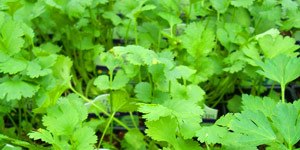 Once you learn how to grow cilantro, you will be on your way to a fruitful garden full of surprises. Once you have learned all there is to know about how to grow cilantro, you will need to keep in mind some helpful tips to keep your garden alive and also plentiful. Cilantro is a fairly easy plant to grow but can become finicky in certain weather which can cause it to sprout seeds instead of your beautiful cilantro plants. Take these tips into account and apply them to your knowledge of how to grow cilantro.
Once you learn how to grow cilantro, you will be on your way to a fruitful garden full of surprises. Once you have learned all there is to know about how to grow cilantro, you will need to keep in mind some helpful tips to keep your garden alive and also plentiful. Cilantro is a fairly easy plant to grow but can become finicky in certain weather which can cause it to sprout seeds instead of your beautiful cilantro plants. Take these tips into account and apply them to your knowledge of how to grow cilantro.
- Always understand the optimum temperature needed for the plants to survive. Do not plant them when the temperature will steadily rise above 75-80 degrees Fahrenheit for more than a couple days.
- Keep your cilantro plants in the sunlight for a minimum of 6 hours per day.
- Cilantro can be planted indoors if you prefer.
- Pinching the tops of your seedlings will help the plant grow bushy.
- All parts of the cilantro plant are edible and can be used in cooking.
- Do not allow your garden to become too crowded and always remove the weaker plants and allow the stronger plants to thrive.
- Cilantro seeds are better to use than the plants as the plants do not like to be transplanted and do not do well when this occurs.
- Remember to harvest your garden in sections and always replant new seeds every few weeks so that you will continually be harvesting cilantro.
- Always discourage pests and treat them if you find them.
- Diseases can harm your plants and need to be treated immediately.
- Always save the seeds if you plan on having some fresh coriander around the house.
- Enjoy your cilantro and use it in your recipes!
- Try and eat the cilantro fresh but if not, you can store it for later use.
5. Storing Cilantro
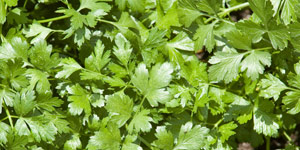 Once you have learned how to grow cilantro, you will want to enjoy the cilantro by using it in your recipes and also as a garnish. Learning how to grow cilantro is just part of the process. Once you harvest the cilantro and also the seeds, what do you do with them? Some people may find themselves stuck with a bunch of cilantro and they don’t know how to keep it fresh.
Once you have learned how to grow cilantro, you will want to enjoy the cilantro by using it in your recipes and also as a garnish. Learning how to grow cilantro is just part of the process. Once you harvest the cilantro and also the seeds, what do you do with them? Some people may find themselves stuck with a bunch of cilantro and they don’t know how to keep it fresh.
Cilantro is an herb that is best when it is fresh and also fresh picked. You can easily store cilantro in the refrigerator for a short period of time if you plan on using it in the near future. Grab a glass of water and clip the ends off of the cilantro stems. Place them in the glass with water and cover with a paper bag. You can refrigerate the cilantro like this for up to 10 days.
Cilantro can also be frozen if you do not plan on using it right away. You can freeze cilantro in the freezer for up to 2 months’ time. This is ideal for someone who has an overabundance in their garden and does not use the herb on a daily basis. To freeze the cilantro you can place the leaves in an ice cube tray with a small amount of water. Allow the water to freeze in the ice cube tray and then pop them out once frozen. Place the cilantro cubes in a freezer bag and place in the freezer.
If you choose to keep the coriander seeds, you can easily store them in your cupboard. Make sure you keep the seeds in a dry place and away from sunlight. You can place the seeds in an air tight container and store them until use. If you are worried about whether they are still fresh, grind one down and smell the spice. You will be able to tell how fresh they are based on the potency of the flavor. The aroma should be very strong.
6. Final Word
 Learning how to grow cilantro is fun and it will pay off in the end for you. Once you learn how to grow cilantro, you will be saving yourself money and also have a nice, fresh crop to use in your own kitchen. Cilantro is an ideal herb that can be used in many different dishes such as Mexican and Indian cuisines. Besides just being used for cooking, cilantro has a lot of health benefits and has been used for medicinal purposes in the past.
Learning how to grow cilantro is fun and it will pay off in the end for you. Once you learn how to grow cilantro, you will be saving yourself money and also have a nice, fresh crop to use in your own kitchen. Cilantro is an ideal herb that can be used in many different dishes such as Mexican and Indian cuisines. Besides just being used for cooking, cilantro has a lot of health benefits and has been used for medicinal purposes in the past.
Once you have grasped how to grow cilantro, you will be able to get started on your own garden right away without any hesitation. This herb is easily grown and as long as you follow this guide and remember important tips and care, you will do fine.
Cilantro is a plentiful crop that will continue to grow as long as you plant it in the right season and harvest it when needed. Once cilantro has gone out of season, you can allow the plants to continue to grow until they flower and seed. This seed can be used as the spice known as coriander.
Learning how to grow cilantro is beneficial to you and also to your kitchen. You will enjoy every aspect of cultivating this delicate herb and you can also teach others how to grow cilantro.

